If there is anything in which the Japanese are true masters is in living in harmony with life itself, this is demonstrated by the Japanese tea ceremony, also known as Chadō. A real gift, their innate ability to flow naturally with everything that happens from the smallest everyday gestures. Rooted in the here and now, fully in tune with the present moment.
Chadō, the Japanese Tea Ceremony – 茶道
Guest Author: Flavia
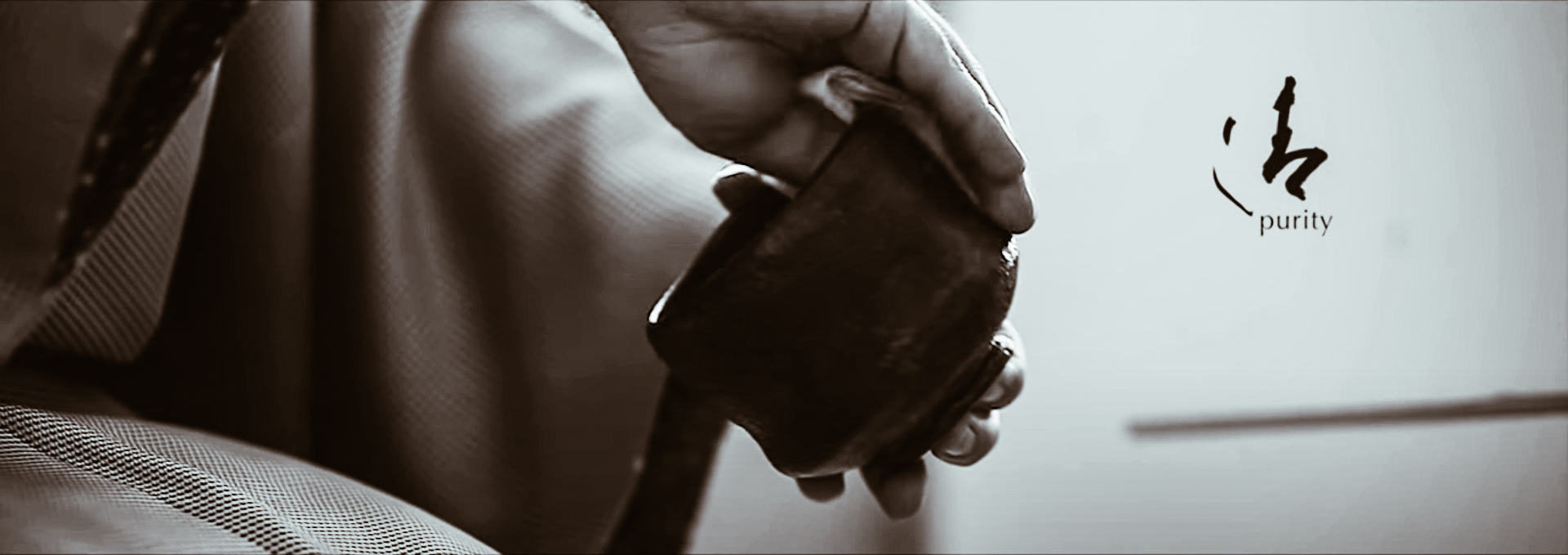
photo credits: YouTube
Therefore, it’s not surprising that the people of the Rising Sun have been able to translate this extraordinary talent into various forms of art. They are in fact real ways of living (the so-called Ways – 道, Dō) through which to express their ability to grasp the meaning of existence. The Chadō or Sadō ( 茶道 ), or the Way of Tea, is one of the most significant and appreciated. Otherwise called Cha no Yu (茶の湯) – literally “Hot water for tea” – it is a social ritual aimed at educating the individual. A true philosophy of life and aesthetic form that has strongly permeated Japanese culture. But how did this tradition originate?
The matcha, from southern China in the bosom of Zen
Originally from the Yunnan region, the tea plant has been known for its therapeutic properties since ancient times. Initially, it was in fact used as natural medicine, it will only become a form of “delight” later. It was consumed in a monastic environment, being used by monks to promote concentration during meditation or studies. However, it will land in Japan at the beginning of the Heian period at the hands of Japanese monks who went to China to study Zen (禅, from Chinese chan).
Tradition attributes in particular to the monk Myōan Eisai – who lived between the 12th and 13th centuries – the role of the precursor of the tea ceremony. As it happened, he introduced in Japan the form of Rinzai Zen Buddhism (Linzhi or Linji, in Chinese) and with it a specific method of preserving and preparing tea. In essence, it provides that tea is kept away from light and oxygen and prepared according to the method of suspension (instead of infusion): this allows to better preserve its properties. The tea associated with the ceremony will become known as Matcha (抹茶), that is powdered tea. Actually, from that moment the consumption of tea will begin to spread on a large scale, leaving the monastic and aristocratic circles where it had been confined until then.

photo credits: tesoridoriente.net
Therefore Tea (Cha, 茶) has its roots in the Zen doctrine, which will remain decisive also for the diffusion of Chadō, inexorably permeating it. Zen and theism, therefore, developed at the same pace (since the 12th century). A key role here will be played by the equally nascent Samurai class destined to dominate the scene shortly afterwards. The caste will welcome the Zen doctrine, which will make it totally its own, and the cult of tea as a sort of status symbol.
Rikyū, father of Cha no Yu
After Eisai, other masters will leave their mark on the Chadō still in “embryonic” form. This is Murata Jukō, father of the Wabi-cha style ( 侘茶 ) – already well distinctive of the Japanese style compared to the Chinese one – and Takeno Jō. However, at this stage it cannot yet be configured as a real ceremonial rite. It will be necessary to wait until the sixteenth century for a real codification to take place and transform it into the form that has reached our days.
Creator of this reform, none other than the historic tea master of Oda Nobunaga and Toyotomi Hideyoshi, Sen no Rikyū, whose imprint will be revolutionary. He will go further than Murata Jukō, completely undermining the aesthetic taste of the Shōgun. Before his intervention, in fact, the execution took place focusing on the objects, that is, thought of their performance. With Rikyū, the focus becomes the people and the ceremony becomes less elaborate and more essential. In addition, he sets real rules around the concept of wabi ( 侘び ) – i.e. the beauty that lies in the essentiality and simplicity – applied to the performance of the ceremony and the gestures to be performed. The important Zen vision of Wabi Sabi ( 侘寂 ) – which we will have the opportunity to deepen in a next article – is thus consecrated as a pivotal concept, soul, of Cha no Yu.
Chadō, the four founding principles
4 are the principles Rikyū summarizes for the performance of Cha no Yu. They concern both the people who take part in it and the tools used as well as the room itself. Naturally borrowed from Zen aesthetics, they are:
- Wa (和), Harmony. The absence of imbalances or extremism in the interaction between the surrounding environment, things and people. Particular attention is paid to the interaction between guests and landlord: putting guests at ease becomes a pivotal point.
- Kei (敬), Respect. Recognition for the existence of things and people. A sincere soul is necessary: only an open soul will be able to perceive things and people in their true essence (kokoro, 心) and thus enter into authentic communication.
- You are (清), Purity. The absence of attachment to earthly things. Without such purification, true communion with the All is unattainable. It is taken up symbolically from the roji stone path (路地) placed in the gardens outside the tea houses. The variety of shapes and distances between the stones is not by chance designed to educate the guest already from outside to a conscious exercise of attention.
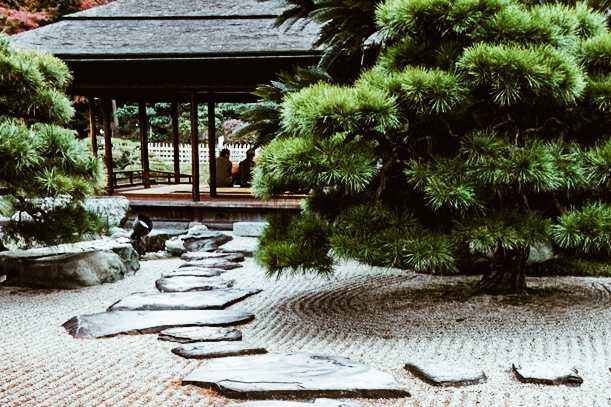
photo credits: iaininjapan.deviantart.com
In a way, the tea ceremony already begins in the garden. Because it helps those who walk this path (a Way) to harmonize with nature even before they set foot in the tea room. The principle is also “evoked” by the symbolic purification of the participants who, once invited to enter by the host, must rinse their mouths and hands.
Jaku (寂), Serenity. The state that is achieved in a natural way by the practice of these three principles already from daily life.
If the hearts of all those present will be open and receptive to the emptiness of that moment if the mind will have left that outside world beyond the garden: a harmony will be born so deep that environment, things and people… will become one. In a perfect fusion where dualism dissolves and it is no longer known where the boundaries of one or the other end or begin.
Chadō, Less is more: beauty according to the Japanese sensibility
In this perspective, negation becomes a positive value, the state of mind par excellence. This is reflected in the research of a frugal style which avoids ostentation and superfluous, already starting from the tea room, the Chashitsu ( 茶室 ).
The latter must be devoid of excessive earthly elements: in the Zen perspective of the master Rikyū it is necessary to limit sensory stimuli as much as possible. Leave space to the void, in order to empty the mind. Then the void itself will give space to the sounds that spontaneously emerge from it and that otherwise too many sensory stimuli would end up eclipsing. Sounds thus assume greater depth and the consciousness is refined. Perception is in fact amplified thanks to silence not only auditory but also visual, olfactory, tactile and gustatory. The senses are literally educated not to be dependent on stimuli, but in this way, they become more receptive. It may seem paradoxical to most people. But if you who are reading have so far understood the sensitivity that underlies this philosophy, you will certainly have understood this too.
The room must, therefore, be minimal, not so much illuminated, “intimate”. It must be welcoming. Verbal interactions must be reduced to a minimum, also because non-verbal communication can be done here. Everything is designed in order to create a meditative atmosphere – typical of Zen. It is therefore recommended that we keep our eyes ajar in order to let the images that come into our field of vision flow, avoiding our sense of “feeling” them too much.
The semi-darkness of the room gives back value to the other senses other than sight, usually a little overwhelmed by it. The touch, for example, that emerges in contact with the teacup, in particular, if it is raku ( 楽 ), a symbolic cup in Chadō and Wabi Sabi because of its imperfect shapes that make it unique and unrepeatable. Or, in the case of the traditional Wagashi ( 和菓子, literally “Japanese sweet” ), where the dominant sense would be the taste, we find, on the contrary, also the sight and the other senses involved in a superfine way. But let’s dwell on the concept of unrepeatability.
But let’s dwell on the concept of unrepeatability.
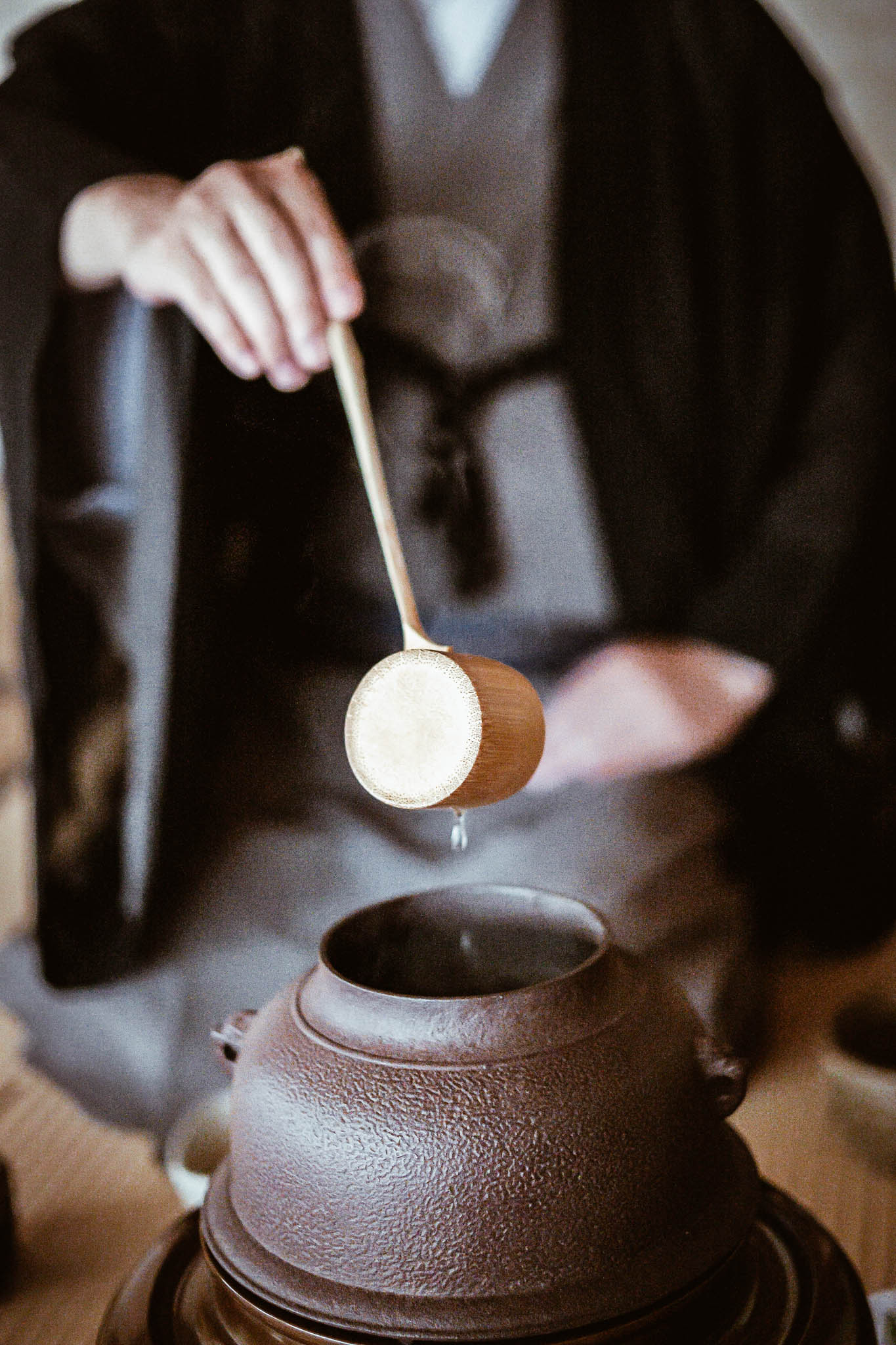
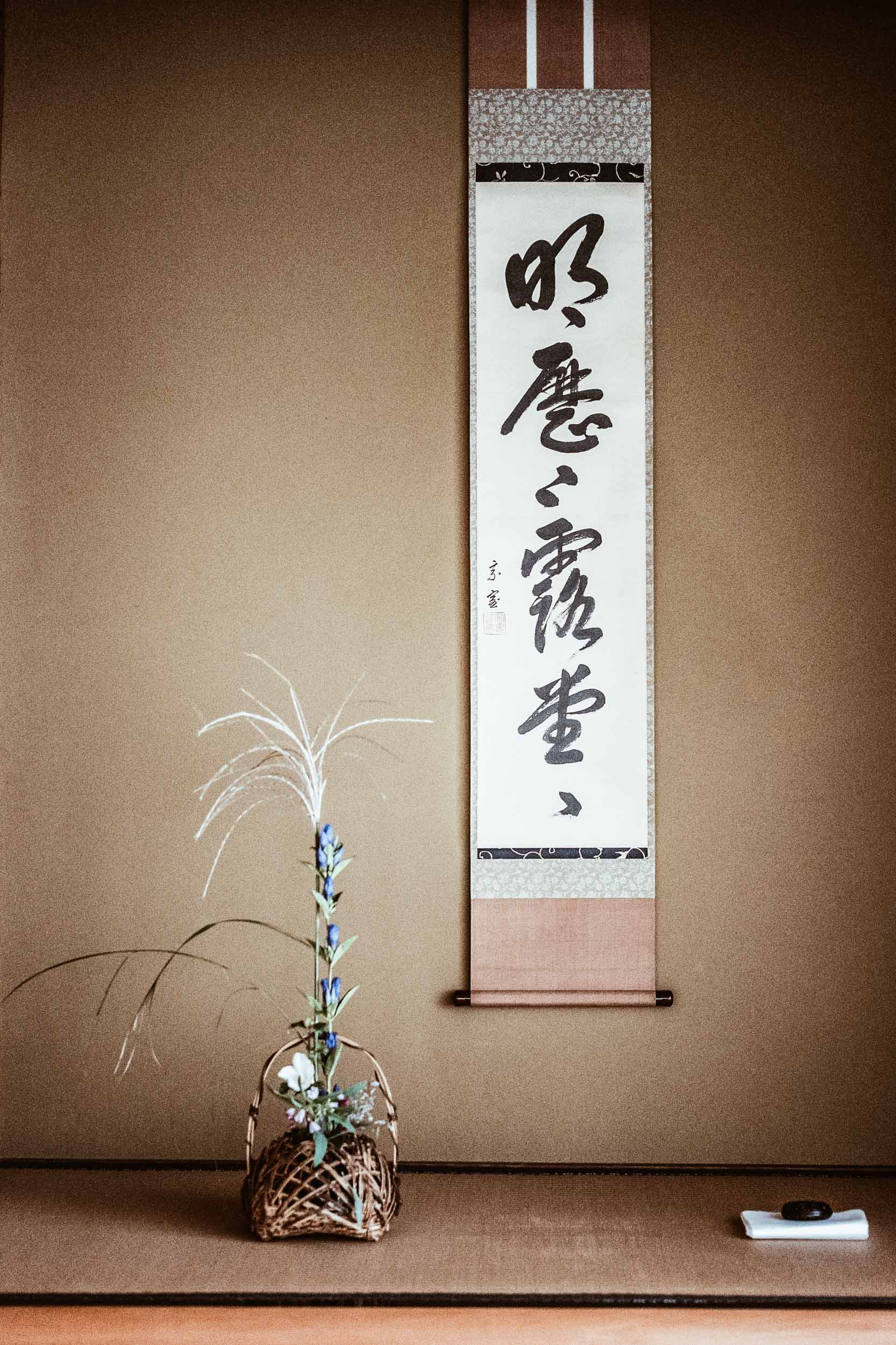
photo credits: moroalberto.com
Ichi go, Ichi e (一 期 一 会), the metaphor of life
Literally “once, an encounter”, Ichi go-Ichi and is a Zen expression that refers to the idea of transience. It reminds us how every single encounter is unique and unrepeatable. Yes, in time we can repeat the ritual of Chadō as many times as we want, but each time remains unique in itself and distinct from the others. The atmosphere experienced in each encounter can never be the same the following times. Therefore, each one of them should be appreciated…as an encounter that happens only once in a lifetime.
So in Chadō, so in life: let go past and future. To take from them the knowledge we need for our learning, yes, but just enough not to get stuck with our minds. Otherwise, we run a risk: that of not appreciating in time the things that are with us here and now. Remaining, in that case, with the regret of not being able to see them in their value (remember the Kei, Respect) when they end their time in our lives.
That is when Zen wisdom comes to us, reminding us that this is the time to focus on, in the here and now, appreciating as much as possible what you have now that you have it. You have to live now and live it, in every single unrepeatable moment. But then again, what is the art of Cha no Yu if not life itself?
Kata – Katachi: When form becomes part of you
In Chadō every gesture is not random: movements and breathing must be harmonized, in order to transmit serenity in giving that cup of tea. You should know that Japanese culture attaches great importance to the concept of form (kata, 型), i.e. gestures codified by certain principles. Not schemes that are an end in themselves but a way to achieve a body-mind-spirit fusion and consequently harmony with existence itself (the concept permeates their vision of the world to such an extent that it also has its own small linguistic form).
When a practitioner arrives at embodying kata to the point that they no longer feel as something external to themselves – to be “staged” – then we speak of katachi ( 形) or “internalized forms”. Through kata the practitioner learns patience, precision, resilience…and is forged from them. Final goal: the attainment of harmony with oneself and the surrounding world.
Observe-execute, to the point of internalizing: this is the basic approach of all Japanese art forms-disciplines. It is really part of their soul. They do nothing but decline this feeling in various areas of life. A way of life (the Way) that gives rise to forms of art and discipline which, in turn, guide the individual’s path of life. A perfect circle that closes…
But the search for the perfect gesture carries within it another magical gift, that of dilating time. The present moment is crystallized and in that moment the depth of the senses puts us in communion with nature.
But beware: it is not an escape from reality. Sometimes for the human mind, the boundary between the two can be very subtle, but it is a mistake: to shun reality means in truth to alienate oneself from being present. No escape, therefore, as well as no attachment (two extremes of avoiding). But lucid, conscious fusion with what is happening in that place, in that moment. With reality.
The Way of tea, therefore, requires a true psycho-physical discipline about oneself and long preparation. So much so that in the process of self-improvement – as in any self-respecting spiritual discipline – the practitioner can be hindered by the human emergence of feelings such as laziness, apathy or other grey areas.

photo credits: moroalberto.com
The ceremony
The ritual is very complex, especially in its extended form. There is, in fact, a traditional version lasting four hours(!) reserved for formal events (Chaji, 茶事 ) and a reduced version for informal occasions (Chakai, 茶会 ). Likewise, Chashitsu can be distinguished in small (Koma, 小間) or large (Hiroma, 広間). The Koma is the wabi-cha room par excellence, while the Hiroma is well suited to more official circumstances.
During the ceremony, the tea water is boiled in an iron or cast iron teapot. When it is ready, pour some into the ceramic cup where the matcha was previously brought. Then, the whole thing is beaten with a bamboo whisk. The appearance of foam indicates that the tea can be served.
But let’s see what happens depending on whether we’re in a formal or informal event.
茶事Chaji
- Before tea. Since drinking and eating never go hand in hand, the traditional Kaiseki meal is offered first ( 懐石o会席 ). After the meal, Wagashi are offered at a later stage. Different Wagashi will be paired according to whether the tea is dense or not (as we will see shortly also in the Chakai).
- Usucha. The guests individually drink a whole cup of tea, this time no denser, they dry the edges of it and give it back to the master who in turn washes it, dries it, and prepares it for the next guest.
The ceremony in this form is very elaborate, so breaks and even room changes are envisaged.
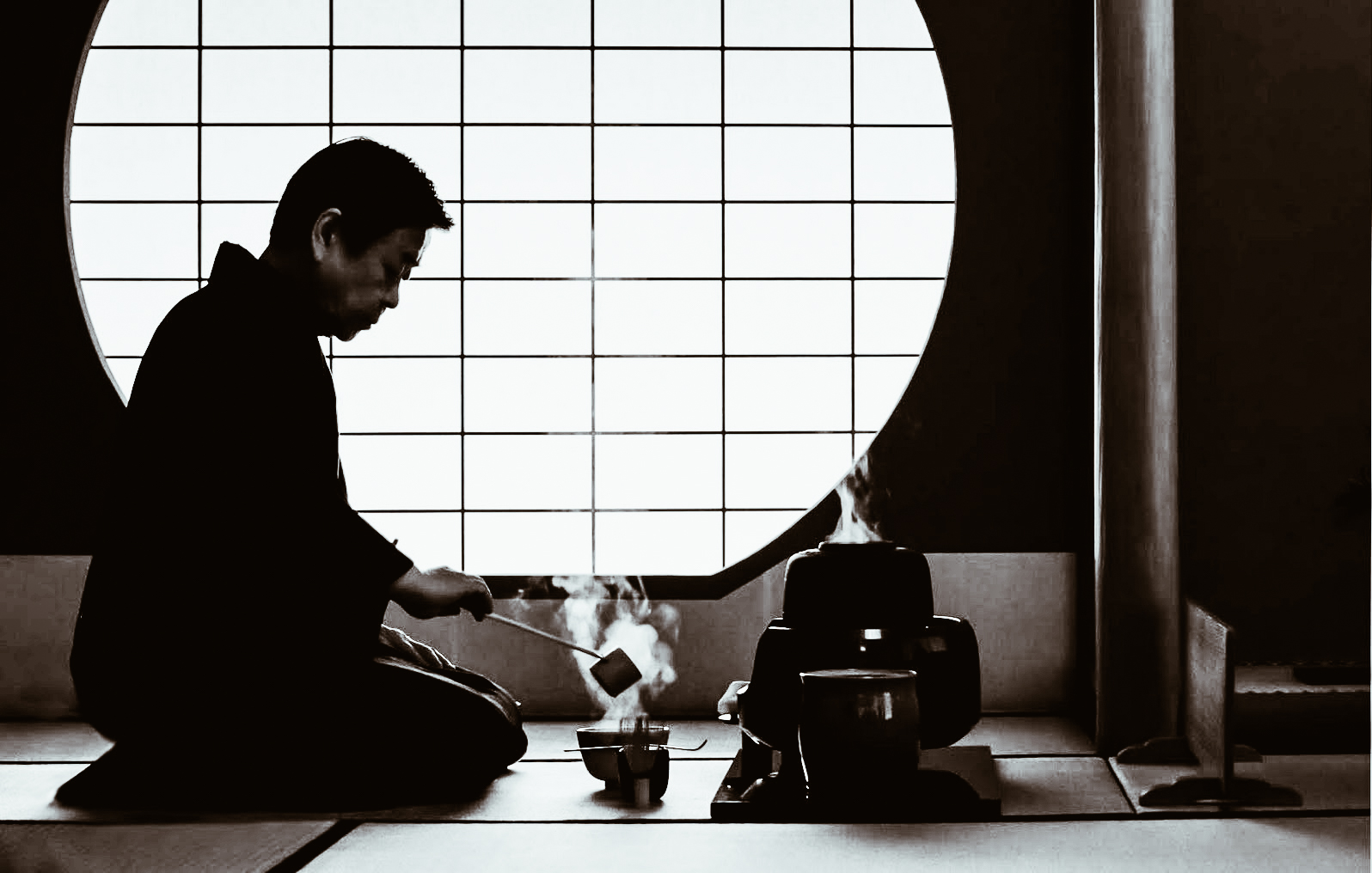

photo credits: pinterest.co.kr, pinterest.it
茶会 Chakai
- Before tea. Here the guests receive only the traditional Wagashi sweets, specifically: Higashi (dry sweets) if Usucha is served, Omogashi (soft sweets) if Koicha is served. In any case, the dessert will have to compensate for the bitter taste of the matcha.
- Koicha or Usucha. As the time available is shorter, only one of the two modes can be presented. It will then be up to the teishu (master of ceremonies) to decide which one to perform.
Everything concerning the behaviour to be held or not during the ceremony is called Otemae (お点前). It is known as “etiquette”, but it is much more than that. The very way in which the ceremony is carried out right from the preparations (setting up, cleaning and so on) already constitutes the Tea Route. And therefore, the Otemae.
Ways within the Way, Art within Art
The Tea Route is emblematic. For in itself it contains other forms of art that already constitute a world of their own. Other Paths that intersect and unfold in that of Tea creating a unique association where that perfect fusion – mentioned above – is already taking shape. The artisan technique of Raku ceramics, for example, is perfect for embodying the Zen spirit of the Tea Route: in extracting the still incandescent cups from the kiln, it enhances the naturalness of the irregular shapes randomly generated.
The marvellous art of the Wagashi has evolved parallel to Chadō, finding in it its maximum expression. Influenced by the Yin and Yang philosophy and the five elements, its designs and colours inspired by nature and seasons promise an awakening of the five senses. We also include Chakaiseki (茶懐石, Kaiseki kitchen applied to Chadō), Chabana (茶花, Ikebana applied to Chadō), the architecture itself. Even poetry: among the possible verbal interactions there is the possibility for the landlord to quote a Haiku (typical poetic composition) for seasonal reference. They all remind us that things also have a spirit. And that it must be nurtured, respected, contemplated… just like ours.
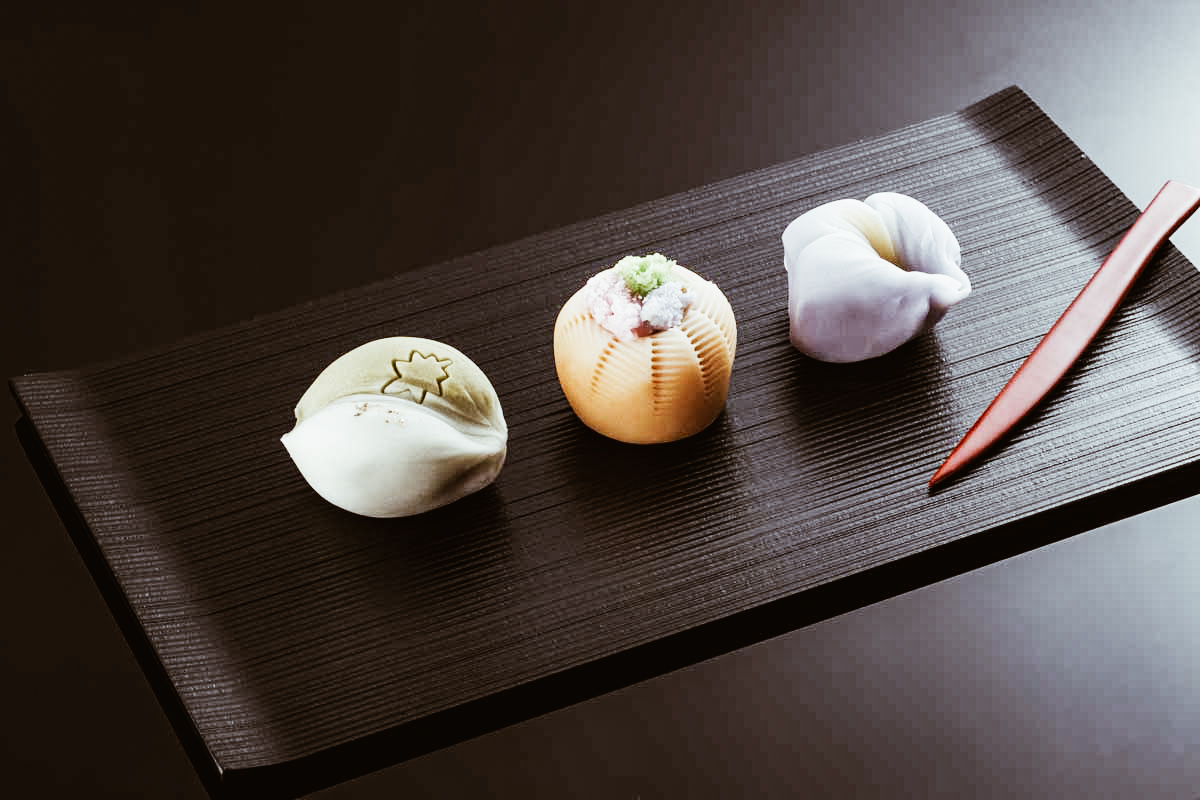
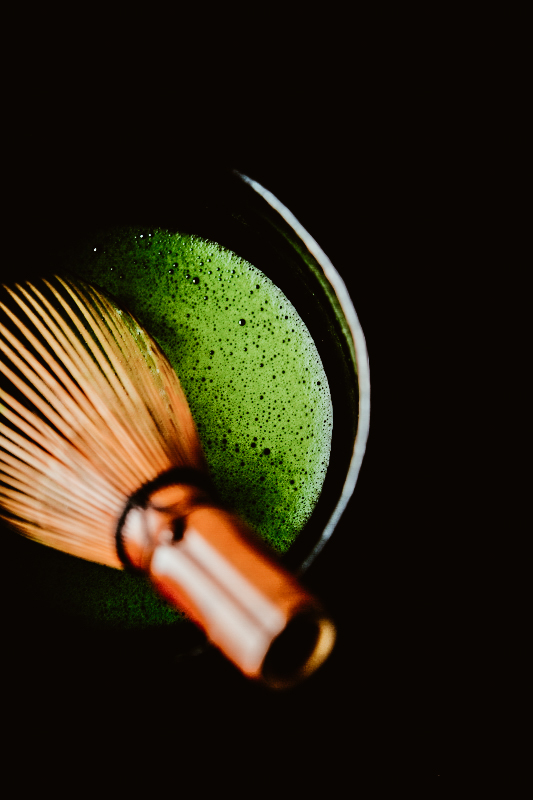
photo credits: sweetsofjapan.com, Flickr
A universe enclosed in a single cup of tea
The Tea Ceremony is, therefore, a meditative practice to all effects that with the “excuse” of a cup of tea leads us to the doorway of our Consciousness. This intent is at the basis of all Japanese art forms: to use earthly things without being harnessed by them. Knowing how to seek, feel, the spirit within the earthly experience inevitably included in it. The key is not to exclude it, but simply not to be harnessed by it.
As a little girl, I myself did not understand the necessity of having to make all those gestures. Now, after experiencing a particular state of emptiness simply thanks to a pair of chopsticks (hashi), everything became crystal clear to me. Understanding in my heart the loving act of these people, in trying to express this truth. That is why only by experiencing it in person can you truly understand.
As of today, in fact, the main Chadō schools come from the descendants of Sen no Rikyū and are the Omotesenke, the Urasenke and the Mushanokojisenke. They present technical and stylistic differences that however do not affect what is the spirit at the base of Cha no Yu. There are also other minor schools. Among these: the Oribe-ryū descending from Furuta Oribe (successor pupil of Rikyū) and the Yabunouchi-ryū founded instead by such Yabunouchi Kenchū Jōchi who was a disciple of Takeno Jōōō as Sen no Rikyū.
Finally, it is worth mentioning the lesser-known Senchadō (煎茶道), the variant “for infusion” of Cha no Yu, which uses the precious green tea leaves. More recent than Chadō, it is born with a more convivial tone and less “spiritually committed”, although it is inspired in several aspects. However, it differs in that it is less rigid and more focused on aesthetic pleasure and fine utensils.
Share this:
- Click to share on Facebook (Opens in new window)
- Click to share on Twitter (Opens in new window)
- Click to share on Tumblr (Opens in new window)
- Click to share on Pinterest (Opens in new window)
- Click to share on Telegram (Opens in new window)
- Click to share on WhatsApp (Opens in new window)
- Click to share on Reddit (Opens in new window)
- Click to print (Opens in new window)






